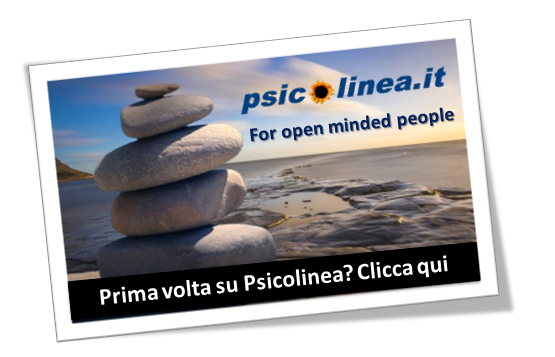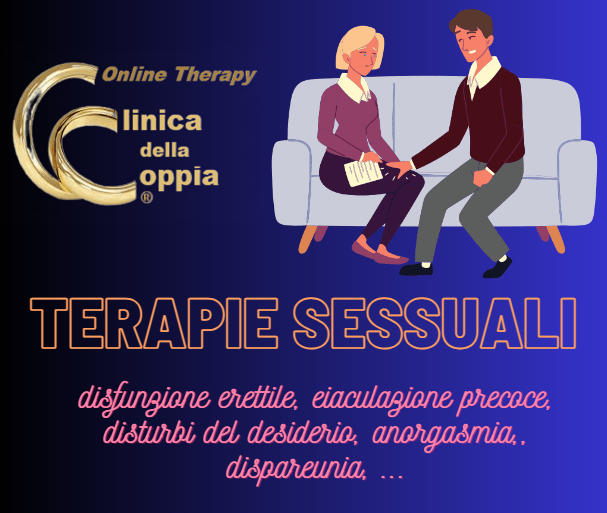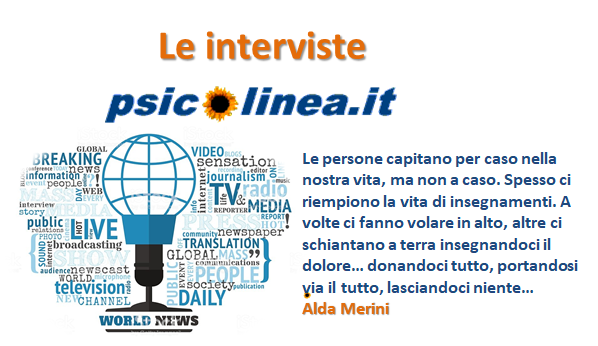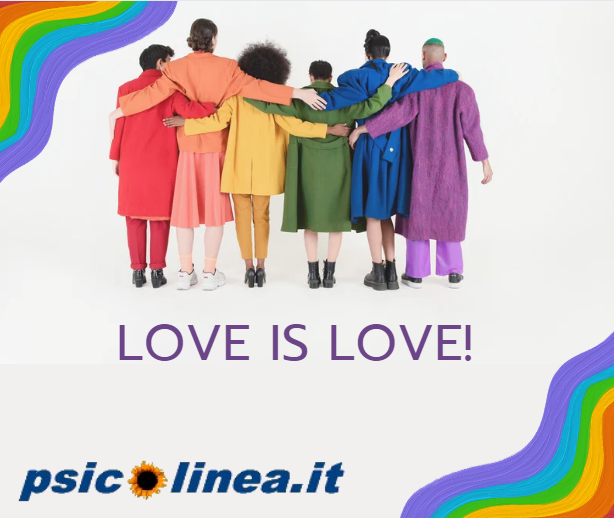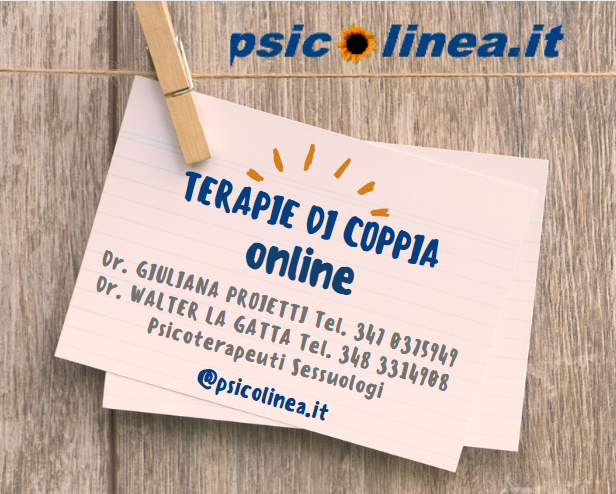Does Psychology make a significant difference in our lives? , by Philip Zimbardo, Storic Archives of Psicolinea
By Philip G. Zimbardo – Stanford University
The intellectual tension between the virtues of basic versus applied research that characterized an earlier era of psychology is being replaced by an appreciation of creative applications of all research essential to improving the quality of human life. Psychologists are positioned to “give
psychology away” to all those who can benefit from our wisdom. Psychologists were not there 35 years ago when American Psychological Association (APA) President George Miller first encouraged us to share our knowledge with the public. The author argues that psychology is
indeed making a significant difference in people’s lives; this article provides a sampling of evidence demonstrating how and why psychology matters, both in pervasive ways and specific applications. Readers are referred to a newly developed APA Web site that documents current operational uses of psychological research, theory, and methodology (its creation has been the author’s primary presidential initiative): www.psychologymatters.org.
Does psychology matter? Does what we do, and have done for a hundred years or more, really
make a significant difference in the lives of individuals or in the functioning of communities and nations?
Can we demonstrate that our theories, our research, our professional practice, our methodologies, our way of thinking about mind, brain, and behavior make life better in any measurable way? Has what we have to show for our discipline been applied in the real world beyond academia and
practitioners’ offices to improve health, education, welfare, safety, organizational effectiveness, and more?
Such questions, and finding their answers, have always been my major personal and professional concern.
Una Conferenza su Salute e Benessere
First, as an introductory psychology teacher for nearly six decades, I have always worked to prove relevance as well as essence of psychology to my students. Next, as an author of the now classic basic text, Psychology and Life (Ruch & Zimbardo, 1971), which claimed to wed psychology to life applications, I constantly sought to put more psychology in our lives and more life in our psychology (Gerrig & Zimbardo, 2004; Zimbardo, 1992).
To reach an even broader student audience, I have coauthored Core Concepts in Psychology (Zimbardo, Weber, & Johnson, 2002) that strives to bring the excitement of scientific and applied psychology to students in state and community colleges.In order to further expand the audience for what is best in psychology, I accepted an invitation to help create, be scientific advisor for, and narrator of the 26-program PBS TV series, Discovering Psychology (1990/2001). For this general public audience, we have provided answers—as viewable instances—to their “so what?” questions. This award-winning series is shown both nationally and internationally (in at least 10 nations) and has been the foundation
for the most popular telecourse among all the Annenberg CPB Foundation’s many academic programs (see www.learner.org). Finally, as the 2002 president of the American Psychological Association, my major initiative became developing a compendium of exemplars of how psychology has made a significant difference in our lives.
This Web-based summary of “psychology in applied action” has been designed as a continually modifiable and updateable repository of demonstrable evidence of psychological knowledge in meaningful applications. In a later section of this article, the compendium will be described more fully and some of its examples highlighted. I was fortunate in my graduate training at Yale University (1954 –1960) to be inspired by three exceptional mentors, each of whom modeled a different aspect of the relevance and applicability of basic psychology to vital issues facing individuals and our society. Carl Hovland developed the Yale Communication and Attitude Change Program after coming out of his military assignment in World War II of analyzing the effectiveness of propaganda and training programs (Hovland, Lumsdaine, & Sheffield, 1949). He went on to transform what was at that time a complex, global, and vague study of communication and persuasion into identifiable processes, discrete variables, and integrative hypotheses that made possible both experimental research and applications.
Neal Miller always straddled the fence between basic and applied research, despite being known for his classic experimental and theoretical formulations of motivation and reward in learning and conditioning. His World War II experience of training pilots to overcome fears so that they could return to combat was an applied precursor of his later role in developing biofeedback through his laboratory investigations of conditioning autonomic nervous system responses (N. E. Miller, 1978, 1985, 1992). The last of my Yale mentors, Seymour Sarason, moved out from his research program on test anxiety in children into the community as one of the founders of Community Psychology (Sarason, 1974). It was a daring move at that time in a field that honored only the scientific study of individual behavior. Psychology of the 50s was also a field that honored
basic research well above applied research, which was typically accorded second-class status, if not denigrated by the “experimentalists,” a popular brand name in that era.Psychology at many major universities aspired to be “soft physics,” as in the heady days of our Germanic forebears, Wundt, Fechner, Ebbinghaus, Titchner, and others (see Green, Shore, & Teo, 2001).
Anything applied was seen at best as crude social engineering by tinkerers, not real thinkers. Moreover, behaviorism was still rampant, with animal models that stripped away from learning what nonsense syllable memory researchers had deleted from memory—merely the context, the content, the human meaning, and the culture of behavior. The most prominent psychologist from the 50s through the 80s, B.F. Skinner, was an anomaly in this regard. Half of him remained a Watsonian radical behaviorist who refused to admit the existence of either motivation or cognition into his psychology (Skinner, 1938, 1966, 1974). Meanwhile, the other Skinner side applied operant conditioning principles to train pigeons for military duties and outlined a behaviorist utopia in Walden Two (Skinner, 1948).
Giving Psychology Away: The Call for Societal Accountability
And then along came George Miller whose American Psychological Association (APA)presidential address in 1969 stunned the psychological establishment because one of its own first-born sons committed the heresy of exhorting them to go public, get real, get down, give it up, and be relevant. Well, that is the way I think I heard it back then when George Miller (1969) told his audience that it was time to begin “to give psychology away to the public.” It was time to stop talking only to other psychologists. It was time to stop writing only for professional journals hidden away in library stacks. It was time to go beyond the endless quest for experimental rigor in the perfectly designed study to test a theoretically derived hypothesis. Maybe it was time to begin finding answers to the kinds of questions your mother asked about why people acted the way they did.
Perhaps it was acceptable to start considering how best to translate what we knew into a language that most ordinary citizens could understand and even come to appreciate.
I for one applauded George Miller’s stirring call to action for all these reasons. It was heady for me because I believed that coming from such a distinguished serious theorist and researcher—not some do-gooder, liberal communitarian whom the establishment could readily dismiss his message would have a big impact in our field.
Sadly, the banner raised by Miller’s inspirational speech did not fly very high over most psychology departments for many years to come. Why not? I think for four reasons:Excessive modesty about what psychology really had of value to offer the public, ignorance about who was “the public,” cluelessness about how to go about the mission of giving psychology away, and lack of sufficient concern about why psychology needed to be accountable to the public.
How shall we counterargue against such reasoning?
First, scanning the breadth and depth of our field makes apparent that there is no need for such professional modesty.
Rather, the time has come to be overtly proud of our past and current accomplishments, as I will try to demonstrate here. We have much to be proud of in our heritage and in our current accomplishments. Second, the public starts with our students, our clients, and our patients and extends to our funding agencies, national and local politicians,all nonpsychologists, and the media.
And it also means your mother whose “bubba psychology” sometimes needs reality checks based on solid evidence we have gathered. Third, it is essential to recognize that the media are the gatekeepers between the best, relevant psychology we want to give away and that elusive public we hope will value what we have to offer. We need to learn how best to utilize the different kinds of media that are most appropriate for delivering specific messages to particular target audiences that we want to reach. Psychologists need to learn how to write effective brief press releases, timely op-ed newspaper essays, interesting articles for popular magazines, valuable trade books based on empirical evidence, and how best to give radio, TV, and print interviews.
Simple awareness of media needs makes evident, for example,that TV requires visual images, therefore, we should be able to provide video records of research, our interventions,or other aspects of the research or therapeutic process that will form a story’s core.
“Media smarts” also means realizing that to reach adolescents with a helpful message (that is empirically validated), a brief public service announcement on MTV or an article in a teen magazine will have a broader impact than detailed journal articles or even popular books on the subject. Thus, it becomes essential to our mission of making the public wiser consumers of psychological
knowledge to learn how to communicate effectively to the media and to work with the media.
Finally, we can challenge the fourth consideration regarding societal accountability with the awareness that taxpayers fund much of our research as well as some of the education of our graduate students. It is imperative that we convey the sense to the citizens of our states and nation that we are responsive to society’s needs and, further, that we feel responsible for finding solutions to some of its problems (Zimbardo, 1975). It has become standard operating procedure for most granting agencies now to require a statement about the potential societal value of any proposed research. That does not mean that all research must be applied to dealing with current social or individual problems because there is considerable evidence that research that originally seemed esoterically “basic” has in time found valuable applications (see Swazey, 1974). It does mean that although some of our colleagues begin with a focus on a problem in an applied domain, the others who start with an eye on theory testing or understanding some basic phenomena should feel obligated to stretch their imaginations by considering potential applications of their
knowledge. I believe we have much worthy applicable psychology, basic research, theory, and methodology that is awaiting creative transformations to become valuable applied psychology.
Clicca sull'immagine e fai un giro sul nostro Canale YouTube
The Profound and Pervasive Impact
of Past Psychological Knowledge
Before I outline some recent, specific instances of how psychological research, theory, and methodology have been applied in various settings, I will first highlight some of the fundamental contributions psychology has already made in our lives. Many of them have become so pervasive and their impact so unobtrusively profound that they are taken for granted. They have come to be incorporated into the way we think about certain domains, have influenced our attitudes and values, and so changed the way individuals and agencies behave that they now seem like the natural, obvious way the world should be run. Psychology often gets little or no credit for these contributions—when we should be deservedly proud of them.
Psychological Testing and Assessment
One of psychology’s major achievements has been the development and the extensive reliance on objective, quantifiable means of assessing human talents, abilities, strengths, and weaknesses. In the 100 years since Alfred Binet first measured intellectual performance, systematic assessment has replaced the subjective, often biased judgments of teachers, employers, clinicians, and others in positions of authority by objective, valid, reliable, quanti-fiable, and normed tests (Binet, 1911; Binet & Simon, 1915).
t is hard to imagine a test-free world. Modern testing stretches from assessments of intelligence, achievement, personality, and pathology to domains of vocational and values assessment, personnel selection, and more. Vocational interest measures are the backbone of guidance counseling and career advising. The largest single application of classified testing in the world is the Armed Services Vocational Aptitude Battery that is given to as many as 2 million enlisted personnel annually. Personnel selection testing has over 90 years of validity research and proven utility.
We are more familiar with the SAT and GRE standardized testing, currently being revised in response to various critiques, but they are still the yardstick for admission to many colleges and universities (Sternberg, 2000). Workplace job skills assessment and training involves huge numbers of workers and managers in many countries around the world (DuBois, 1970). Little wonder, then, that such pervasive use of assessments has spawned a multibillion dollar industry. (Because I am serving here in this article in the capacity as cheerleader for our discipline, I will not raise questions about the political misuse or overuse of testing nor indeed be critical of some of the other contributions that follow; see Cronbach, 1975.)
Costo della Terapia online, Individuale e di Coppia, 70 euro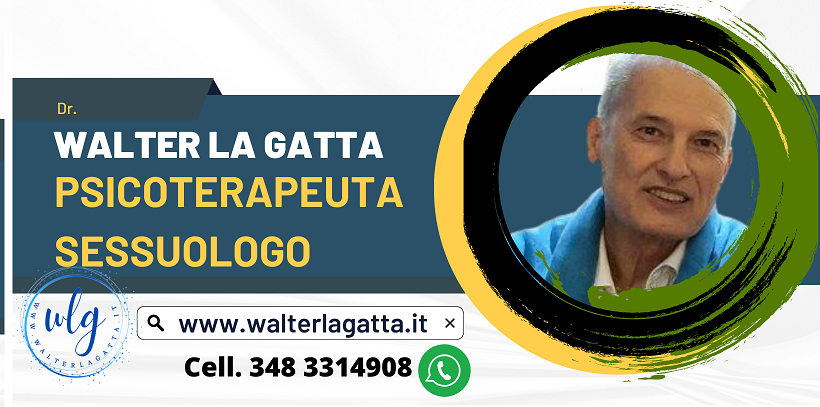
Positive Reinforcement The earlier emphasis in schools and in child rearing on punishment for errors and inappropriate behavior has been gradually displaced by a fundamentally divergent focus on the utility of positive reinforcement for correct, appropriate responding (Straus & Kantor, 1994). Punishing the “undesirable person” has been replaced by punishing only “undesirable behavioral acts.” Time-outs for negative behaviour have proven remarkably effective as a behavior-modification strategy (Wolfe, Risley, & Mees, 1965). It has become so effective that it has become a favorite technique for managing child behavior by parents in the United States.
“Half the parents and teachers in the United States use this nonviolent practice and call it ‘time-out,’ which makes it a social intervention unmatched in modern psychology,” according to the American Academy of Pediatrics’ (1998) publication.
Animal training has benefited enormously from procedures of shaping complex behavioral repertoires and the use of conditioned reinforcers (such as clickers’ soundings paired with food rewards). An unexpected value of such training, as reported by animal caregivers, is that they enhance the mental health of many animal species through the stimulation provided by learning new behaviors (San Francisco Chronicle, 2003). Skinner and his behaviourist colleagues deserve the credit for this transformation in how we think about and go about changing behavior by means of response-contingent reinforcement. Their contributions have moved out of animal laboratories into schools, sports, clinics, and hospitals (see Axelrod & Apsche, 1983; Druckman & Bjork, 1991; Kazdin, 1994; Skinner, 1974).
Psychological Therapies
The mission of our psychological practitioners of relieving the suffering of those with various forms of mental illness by means of appropriately delivered types of psychological therapy has proven successful. Since Freud’s (1896/1923, 1900/1965) early cases documenting the efficacy of “talk therapy” for neurotic disorders, psychotherapy has taken many forms. Cognitive behavior modification, systematic desensitization, and exposure therapies have proven especially effective in treating phobias, anxiety disorders, and panic attacks, thanks to the application of Pavlovian principles of classical conditioning (Pavlov, 1897/1902, 1897/1927), first developed by Joseph Wolpe (1958).
Even clinical depression is best treated with a combination of psychotherapy and medication, and psychotherapy has been shown to be as effective as the drugs alone (Hollon, Thase, & Markowitz, 2002). At a more general level, psychology has helped to demystify “madness,” to bring humanity into the treatment of those with emotional and behavioral disorders, and to give people hope that such disorders can be changed (Beck, 1976). Our practitioners and clinical theorists have also developed a range of treatments designed especially for couples, families, groups, for those in rehabilitation from drugs or physical disabilities, as well as for many specific types of problems such as, addictions, divorce, or shyness.
Self-Directed Change
The shelves of most bookstores in the United States are now as likely to be filled with “self-help” books as they are with cooking and dieting books. Although many of them can be dismissed as bad forms of “pop psych” that offer guidance and salvation without any solid empirical footing to back their claims, others provide a valuable service to the general public. At best, they empower people to engage in self-directed change processes for optimal personal adjustment (see Maas, 1998; Myers, 1993; Zimbardo, 1977).
In part, their success comes from providing wise advice and counsel based on a combination of extensive expert experience and relevant research packaged in narratives that ordinary people find personally meaningful.
Dynamic Development Across the Life Span
Earlier conceptions of children as small adults, as property, and later as valuable property were changed in part by the theories and research of developmental psychologists (see McCoy, 1988; Pappas, 1983). In recent times, the emerging status of “the child as person” has afforded children legal rights, due process, and self-determination, along with the recognition that they should be regarded as competent persons worthy of considerable freedom (Horowitz, 1984).
Psychology has been a human service profession whose knowledge base has been translated into support for a positive ideology of children (Hart, 1991). The human organism is continually changing, ever modifying itself to engage its environments more effectively, from birth through old age. This fundamental conception has made evident that babies need stimulation of many kinds for optimal development, just as do their grandparents.
There is now widespread psychological recognition that infants do experience pain; learning often depends on critical agerelated developmental periods; nature and nurture typically interact in synergistic ways to influence our intelligence and many attributes; mental growth follows orderly progressions, as does language acquisition and production; and that the elderly do not lose their mental agility and competence if they continue to exercise their cognitive skills throughout life (see Baltes & Staudinger 2000; Bee, 1994; Erikson, 1963; Piaget, 1954; Pinker, 1994; Plomin & Mc-Clearn, 1993; Scarr, 1998). These are but a few of the fundamental contributions of psychology to the way our society now thinks about human development over the course of a lifetime because of decades of research by our developmentalist colleagues.
Psychological Stress
Is there any day in our modern lives that stress does not seem to be omnipresent? We are stressed by time pressures on us, by our jobs (Maslach, 1982), by our marriages, by our friends or by our lack of them. Back when I was a graduate student, stress was such a novel concept that it was surprising when our professor Irving Janis (1958) wrote one of the first books on the subject of psychological stress.
The concept of psychological stress was virtually unrecognized in medical care in the 50s and 60s. Psycho-somatic disorders baffled physicians who never recognized stress as a causal factor in illness and disease. Since then, psychological research and theorizing has helped to move the notion of stress to the center of the bio-psychosocial health model that is revolutionizing medical treatments (Ader & Cohen, 1993; Cohen & Herbert, 1996). Psychologists have shown that our appraisals of stress and our lifestyle habits have a major impact on many of the major causes of illness and death (see Lazarus, 1993; Lazarus & Folkman, 1984). We have made commonplace the ideas of coping with stress, reducing lifestyle risk factors, and building social support networks to enable people to live healthier and longer lives (see Coe, 1999; Cohen & Syme, 1985; Taylor & Clark, 1986).
Unconscious Motivation
Psychology brought into the public mind, as did dramatists such as William Albee, Arthur Miller, and Tennessee Williams, that what we think and do is not always based on conscious decisions. Rather, human behavior may be triggered by unconscious motivations of which we have no awareness. Another nod of thanks goes out to the wisdom of Sigmund Freud and of Carl Jung (1936/1959) for helping to illuminate this previously hidden side of human nature. In a similar vein, slips of the tongue and pen are now generally interpreted as potentially meaningful symptoms of suppressed intentions. It is relatively common in many levels of U.S. society for people to believe that accidents may not be accidental but motivated, that dreams might convey important messages, and also that we use various defense mechanisms, such as projection, to protect fragile egos from awareness of negative information.
Prejudice and Discrimination
Racial prejudice motivates a range of emotions and behaviors among both those targeted and those who are its agents of hatred. Discrimination is the overt behavioral sequeala of prejudiced beliefs. It enforces inequalities and injustices based on categorical assignments to presumed racial groups. Stereotypes embody a biased conception of the attributes people presumably possess or lack. The 1954 decision by the Supreme Court of the United States (Brown v. Board of Education of Topeka, KS) that formally desegregated public schools was based on some critical social psychological research.
The body of empirical research by Kenneth and Mamie Clark (1939a, 1939b, 1940, 1950) effectively demonstrated for the Court that the segregated educational conditions of that era had a negative impact on the sense of self-worth of Negro (the then-preferred term) school children. The Court, and the thoughtful public since then, accepted the psychological premise that segregated education, which separates the races, can never be really equal for those being stigmatized by that system of discrimination.
Imposed segregation not only is the consequence of prejudice, it contributes further to maintaining and intensifying prejudice, negative stereotypes, and discrimination. In the classic analysis of the psychology of prejudice by Gordon Allport (1954), the importance of equal status contact between the races was advanced as a dynamic hypothesis that has since been widely validated in a host of different contexts (Pettigrew, 1997).
Humanizing Factory Work
Dehumanizing factory assembly lines in which workers were forced to do the same repetitive, mindless task, as if they were robots, initially gave Detroit automakers a production advantage. However, Japanese automakers replaced such routinized assembly lines with harmonious, small work teams operating under conditions of participatory management and in-group democratic principles. The remarkable success of the Japanese automakers in overtaking their American counterparts in a relatively short time is due in part to their adaptation of the principles of group dynamics developed by Kurt Lewin, his colleagues and students at the Massachusetts Institute of Technology, and the University of Michigan (Lewin, 1947a, 1947b, 1948).
Paradoxically, U.S. auto manufacturers are now incorporating this Japanese work model into their factories, decades after they should have done so. This is one way in which psychological theory can be credited with a humanizing impact on industrial work. But psychologists working in the industrial/organizational framework have done even more to help businesses appreciate and promote the importance of goal setting, worker–job fit, job satisfaction, and personnel selection and training.
Political Polling
It is hard to imagine elections without systematic polling of various segments of the electorate using sampling techniques as predictors of election outcomes. Polling for many other purposes by Gallup, Roper, and other opinion polling agencies has become big business. Readers might be surprised
to learn that psychologist Hadley Cantril (1991) pioneered in conducting research into the methodology of
polling in the 1940s. Throughout World War II, Cantril provided President Roosevelt with valuable information on American public opinion. He also established the Office of Public Opinion Research, which became a central archive for polling data.
How and Why Psychology Matters in Our Lives
I am proud to be a psychologist. As the 2002 APA president, one of my goals was to spread that pride far and wide among my colleagues as well as among all students of psychology. For starters, we can all be proud of the many contributions we have made collectively to enrich the way people think about the human condition, a bit of which was outlined above. I am also proud of the fact that our scientific approach to understanding the behavior of individuals has guided some policy and improved some operating procedures in our society. We have always been one of the most vigilant and outspoken proponents of the use of the scientific method for bringing reliable evidence to bear on a range of issues (Campbell, 1969).
Given any intervention or new policy, psychologists insist on raising the question, “but does it really work?” and utilizing evaluative methodologies and meta-analyses to help make that decision.
Psychologists have modeled the approach to reducing errors in advancing behavior-based conclusions through random assignment, double-blind tests, and sensitivity to the many biases present in uncontrolled observations and research procedures. Many of us have also been leaders in advancing a variety of innovations in education through our awareness of principles of attention, learning, memory, individual differences, and classroom dynamics. In addition, I am proud of our discipline’s dedication to relieving all forms of human suffering through effective therapeutic interventions along with promoting prevention strategies and appropriate environmental change. As psychologists, we should also be pleased by discovering that our theories, research, and methodologies are serving to influence individual and societal actions, as will be shown next.
Una lezione divulgativa sui Social Media
Psychologymatters.org
The scaffolding for such pride in psychology might best be manifest in a newly developed compendium, which shows society what we have done and are doing to improve the quality of life. I wanted to have available in one easily accessible and indexed source a listing of the research and theories that have been translated into practice. Such a resource would indicate how each item is being applied in various settings, such as schools, clinics, hospitals, businesses, community services, and legal and governmental agencies. It would establish the fact that psychology makes a significant difference in our lives by means of these concrete exemplars of its relevant applications. Ideally, this compendium would indicate how psychological contributions have saved lives, reduced or prevented suffering, saved money, made money, enhanced educational goals, improved security and safety, promoted justice and fairness, made organizations operate more effectively, and more. By designing this compendium as a Web-based open file, it can be continually updated, modified, and expanded as promising research meets the criterion of acceptability as having made a practically significant difference.
This effort to devise a compendium began with the help of APA’s Science Directorate, by issuing a call for submissions to many e-mail lists serving APA members and through requests in APA’s Monitor on Psychology and on the www.apa.org Web site. The initial set of items was vetted independently by Len Mitnick (formerly of the National Institute of Mental Health) and me. A “blue-ribbon” task force of journal editors, textbook authors, and senior scientists was formed to further vet these final items, help revise them, and then to work at expanding our base.2 Because this compendium offers the opportunity to
portray an attractive, intelligent face of psychology to the public, final drafts have been edited or rewritten by science writers in APA’s Public Communication’s office, ably directed by Rhea Farberman. Ideally, the submissions appear in a jargon-free, readable style appealing to the nonpsychologist public, as well as to our professional colleagues.
In addition to having the individual items categorized into many general topical domains, readily searchable by key words or phrases, we have expanded the value of this site by adding an extensive glossary of psychological terms, a historical timeline of major psychological events and contributors, and basic information on “how to be a wiser consumer of research.” We will include other extensions as
appropriate based on feedback from colleagues and the public we are serving.
The criteria for inclusion are that each submission be presented (a) in sufficient detail to allow an independent assessment; (b) with evidence of significant statistical effects obtained within the study; (c) with reported application or extension of the submitted research, methodology, or theory in some specific domain of relevance; and (d) with evidence of where and how it has made a significant difference, such as citation of a new law, policy, standardized procedure, or operating system that was based on the submitted item. Items with promise of such applicability in the future (because they were too new to have been subject to any evaluation of outcome effectiveness) are being held in a “wait-and-check-back-later” file. I should mention in passing that many submitted items described research that was interesting, including some classic studies, but they have never met the test of societal applicability.
Costo della Terapia, Individuale e di Coppia, 70 euro
I welcome the feedback of American Psychologist readers on this first phase of our efforts, while also issuing a cordial invitation to add your voice to this compendium with additional worthy submissions. The reach of these initial efforts will hopefully be extended by having this compendium serve as a model to the psychological associations of countries around the world, adding to psychology’s global relevance.
Please visit us at www.psychologymatters.org. But please wait a moment before booting up your computer, until you finish reading the next section of this article, which highlights a sampling of what you will find there.
Highlights of Psychology’s Real World Relevance
I want to conclude with a dozen or so examples taken from our compendium that illustrate a range of its different topics and domains of applicability. This presentation will end with one extended instance of what I consider a model collaboration of theory, research, media applicability, and global dissemination of psychological knowledge conveyed in a unique format—soap operas! It is the ingenious application of the theory of social modeling by Albert Bandura (1965, 1977) in the design of scenarios used in 2
The task force selected to identify and evaluate the research, theory, and methodology in psychology that qualified for inclusion in the Psychology Matters compendium has been ably cochaired by David Myers and Robert Bjork. Other members have included Alan Boneau, Gordon Bower, Nancy Eisenberg, Sam Glucksberg, Philip Kendall, Kevin Murphy, Scott Plous, Peter Salovey, Alana Conner-Snibbe, Beth Sulzer-Azaroff, Chris Wickens, and Alice Young. They have been assisted by the addition of Brett Pelham and David Partenheimer.
Rhea Farberman and her staff in APA’s Office of Public Communications have played a vital role in the development and continuing evolution of this project. The staff of the Science Directorate aided in the early development of the survey that was circulated to initiate electronic input of candidate items from APA constituent groups.soap operas to encourage literacy, birth control, the education
of woman, environmental sustainability, and more.
Human Factors
Traffic safety has been improved by researchers in the area of human factors and ergonomics through a better understanding of visual perception. We now know that changing the standard color of red emergency trucks to a lime-green color reduces accidents because that greenish hue is better perceived in dim light. Similarly, changing traffic sign fonts to increase their recognition at night is another safety improvement resulting from psychological research by Allen (1970), Solomon and King (1985), and Garvey, Pietrucha, and Meeker (1997). Scott Geller’s (2001, 2003) research program applies Skinnerian behavior analysis to increase safe behaviors, reduce at-risk behaviors, and prevent unintentional injuries at work and on the road.
Such unintentional injury is the leading cause of death to people ages 44 years and under. The behavior-based safety (BBS) approach for increasing safety identifies critical behaviors that are targeted for change, establishes baselines, applies change interventions, and evaluates workers’ change away from specific risky behaviors to more beneficial directions. This approach has been applied in thousands of organizations with great success, such as in having people wear seat belts and in occupational safety programs. The rate of reported injuries after five years of implementation of this behavioral approach decreased by as much as an average 72% across a number of organizations (for a summary of the evidence for the extent of injury reduction, see the report by Beth Sulzer-Azaroff & John Austin, 2000). One indicator of the social significance of applying behavior analysis is apparent in the Clinical Practice Guidelines of New York States’ (1999) Department of Health, Early Intervention Program: “It is recommended that principles of applied behavior analysis (ABA) and behavior intervention strategies be included as important elements in any intervention program for young children with autism” (p. 13).
Costo della Terapia online, Individuale e di Coppia, 70 euro

Navigational aids for the blind and visually impaired people have been developed by psychologists Roberta Klatsky and Jack Loomis, working with geographer Reginald Golledge (Loomis, Klatsky, & Golledge, 2001)
over several decades. They utilize principles of spatial cognition along with those of space and auditory perception to guide locomotion. Their new technology is now in development funded by the National Institute for Disability and Rehabilitation Research.
Criminal Justice
Cognitive and social psychologists have shown that eyewitness testimony is surprisingly unreliable. Their research reveals the ease with which recall of criminal events is biased by external influences in interrogations and police line-ups. The seminal work of Beth Loftus (1975, 1979, 1992) and Gary Wells (Wells & Olson, 2003), among others, has been recognized by the U.S. Attorney General’s office in drawing up national guidelines for the collection of accurate and unbiased eyewitness identification (see Malpass & Devine, 1981; Stebley, 1997).
The Stanford Prison Experiment has become a classic demonstration of the power of social situational forces to negatively impact the behavior of normal, healthy participants who began to act in pathological or evil ways in a matter of a few days (Zimbardo, Haney, Banks, & Jaffe, 1973). It added a new awareness of institutional power to the authority power of Stanley Milgram’s (1974) blind obedience studies (see Blass, 1999; Zimbardo, Maslach, & Haney, 1999). The lessons of this research have gone well beyond the classroom. In part as a consequence of my testimony before a Senate judiciary committee on crime
and prisons (Zimbardo, 1974), its committee chair, Senator Birch Bayh, prepared a new law for federal prisons requiring juveniles in pretrial detention to be housed separately from adult inmates (to prevent their being abused).
Our participants were juveniles in the pretrial detention facility of the Stanford jail. A video documentary of the study, “Quiet Rage: The Stanford Prison Experiment,” has been used extensively by many agencies within the civilian and military criminal justice system as well as in shelters for abused women. I recently discovered that it is even used to educate role-playing military interrogators in the Navy SEAR (survival, evasion, and resistance) program about the dangers of abusing their power against others roleplaying pretend spies and terrorists (Annapolis Naval College psychology staff, personal communication, September 18, 2003). The Web site for the Stanford Prison Experiment gets more than 500 visitors daily and has had more than 13 million unique page views in the past four years (www.prisonexp.org). Those surprising figures should be telling us that we must focus more effort on utilizing the power of the Web as a major new medium for disseminating psychology’s messages directly to a worldwide audience.
Costo della Terapia, Individuale e di Coppia, 70 euro
Education
Among the many examples of psychology at work in the field of education, two of my favorites naturally have a social psychological twist. Elliot Aronson and his research team in Austin, Texas, dealt with the negative consequences of desegregated schools by creating “jigsaw classrooms.”
Prejudice against minority children was rampant, those children were not performing well, and elementary school classes were marked by high degrees of tension. But when all students were taught to share a set of materials in small learning teams where each child has one set of information indispensable to the rest of the team, and on which tests and grades depend, remarkable things happened. All kids started to listen to the other kids, especially minority kids who they used to ignore or disparage, because such attention and cooperation is essential to getting a good grade.
Not only did the self-esteem of the minority children escalate, but so did their academic performance, as prejudice and discrimination went down. The techniques of the jigsaw classroom are inexpensive for teachers to learn and to operationalize, so it is no wonder that Aronson’s simple concept is now being incorporated into the curricula of hundreds of schools in many states, with similarly impressive results (Aronson, 1990; Aronson, Blaney, Stephan, Sikes, & Snapp, 1978; Aronson & Gonzalez, 1988; Aronson & Patnoe, 1997).
Teaching young children interpersonal cognitive problem solving skills, known as ICPS, reduces physical and verbal aggression, increases coping with frustrations, and promotes positive peer relationships. This research program developed by Myrna Shure and George Spivak (1982) over the past several decades is a major violence prevention approach being applied in schools and family agencies in programs called “Raising a Thinking Child” and by the U.S. Department of Education’s “I Can Problem Solve” program.
Health
Environmental health is threatened by a host of toxic substances, such as lead, mercury, solvents, and pesticides. Experimental psychologists, behavioral analysts, and psychometricians have helped create the field of behavioral toxicology that recognizes the nervous system as the target for many toxins, with defects in behavior and mental processes as the symptomatic consequences. Pioneering work by psychologist Bernard Weiss (1992, 1999) and others has had a significant impact on writing behavioral tests into federal legislation, thereby better regulating the use of a wide range of neurotoxins in our environment. That research documents the vulnerability of children’s developing brains to chemicals in the environment.
Among the many negative consequences of America’s involvement in the Vietnam War was the explosion of the phenomenon of posttraumatic stress disorder (PTSD). Many veterans were experiencing this debilitating disorder that was uncovered during their psychotherapy treatments.
The more we discovered about this delayed, persistent, intense stress reaction to violence and trauma, the more we realized that veterans of earlier wars had also experienced PTSD, but it was unlabeled. That was also the case with many civilian victims of trauma, among them rape victims and those who had experienced child abuse. PTSD has become a well-recognized and publicly acknowledged phenomenon today because it was one of the mental health consequences of the monumental trauma from the terrorist attacks on September 11, 2001, in New York City and Washington, DC. Credit for the early recognition, identification, measurement, and treatment of PTSD goes to the programs of research funded by the Veteran’s Administration, which was pioneered by the research team of clinical psychologist Terry Keane (Keane, Malloy, & Fairbank, 1984; Weathers, Keane, & Davidson, 2001).
The Magic of Touch
One of the consequences of a host of amazing medical advances is saving the lives of many premature infants who would have died even just a decade ago. With modern intensive care, preemies weighing only a few pounds now survive, but the essential hospital costs are staggering, up to $10,000 a day for weeks or months! One simple solution for sending them home sooner depends on accelerating their growth by means of touch therapy. Psychologist Field extended earlier research she had done with biologist Saul Shanberg (Field, 1998; Field & Schanberg, 1990; Field et al., 1986) on massaging infant rat pups that were motherless. Just as the infant rats rapidly grew in response to that vigorous touch, so did the human preemies. Massaging them several times a day for only 15 minutes was sufficient to stimulate growth hormones. On average, such massaged infants are able to go home six days sooner than comparison
preemies treated in the conventional way.
Given 470,000 premature infants are born each year in the United States alone, it is evident that billions of dollars in health care costs could be saved if this simple, inexpensive treatment was made standard procedure in more hospital intensive care units (see also Meltz, 2000).
To establish the societal value of any intervention designed to save lives or enhance health and well-being,one must systematically evaluate its cost-effectiveness. That means establishing a ratio of the benefits compared with various cost estimates of putting the intervention into operation and sustaining it over time.
Such a ratio was developed for dollar costs per year of life saved and applied to more than 500 life-saving interventions (Tengs et al., 1995). Across all of these interventions, the median cost was $42,000 per year of life saved. Although some programs save more resources than they cost, others cost millions of dollars for each year of life they save and thus become of questionable social value. Using this standard measure, we discover that new neonatal intensive care for low-birth-weight infants (preemies) costs a whooping $270,000 for each year of their lives saved. By that yardstick, the inexpensive touch therapy intervention would dramatically reduce that cost-effectiveness ratio.
The puzzling issue then is why such a simple procedure is not now standard operating procedure in every such intensive care unit in the nation or the world? One goal of our compendium development team is also to investigate why some potentially useful interventions have not been applied in the venues where they could make a significant difference. For instance, social psychologists have shown convincingly that elderly patients in a home for the aged who were given a sense of control and responsibility over even minor events became healthier and lived significantly longer than comparison patients (Langer & Rodin, 1976; Rodin & Langer, 1977). Amazingly, this simple, powerful intervention has not ever been utilized—even in the institution where the research was conducted.
Undoing Dyslexia via Video Games
Treatment for dyslexia by speech therapists and counselors is a slow, long, expensive, and frustrating experience for professionals, parents, and children. Cognitive neuroscientist, Paula Tallal, is using new functional magnetic resonance imaging techniques to identify the source of reading dyslexia in brain regions that do not adequately process fast appearing sound–sight phonemic combinations.
She then worked with a computer-programming agency to develop special video games that systematically shape these children’s ever-faster responses to various sights and sounds in the games. With this new technology, children treat themselves in an atmosphere of entertainment and adventure, rely only on intrinsic motivation of game playing, get personalized feedback, and need minimal supervision by highly skilled professionals. The special computerized video game is called “Fast ForWord.” It provides intensive, highly individualized adaptive training across a large number of cognitive, linguistic, and reading skills that are vital for academic success.
By adapting trial by trial to each child’s performance, progress in aural and written language skills of children with dyslexia is reduced to but a few weeks from what had been typically years of intervention efforts. Approximately 375,000 individuals have completed such training across 2,200 public schools nationwide, and over 2,000 private practice professionals use Fast ForWord programs in their clinics (for more information, visit www.scientificlearning.com and www.brainconnection.com ).
This sensitive application of psychological knowledge and new methods blended with high technology has resulted in enhanced quality of life for these children as well as their families and teachers, not to mention much money and resources saved (see Holly Fitch & Tallal, 2003; Tallal & Benasich, 2002; Tallal, Galaburda, Llinas, & Von Euler, 1993).
An Idealized Example of Psychology
Applied Globally
The use of intrinsically interesting media, such as video games and Tele-Health dynamic systems, enables adults aswell as children to play central roles in individualized health-management programs. The power of the media alsohas been extended to television as a far-reaching medium to convey vital persuasive messages about behavior changes that are essential to cope with many of the social, economic, political, and health problems facing individuals around the globe. Can psychology contribute to effectively dealing with the population explosion in many countries, increase the status and education of women, and minimize or prevent AIDS? A tall order, for sure. However, it is now happening through a remarkable collaboration of a wise TV producer, a brilliant psychologist, and an international agency that distributes their unusual messages worldwide (Bandura, 2002; Smith, 2002).
Promoting Family Planning
The explosion in population around the world is one of our most urgent global problems. Ecologically sustainable development and growth is being challenged by a variety of entwined phenomena, such as high fertility rates in many countries coupled with suboptimal birth rates in others, dramatically increased longevity in some nations along with the spread of deadly communicable diseases in others. One means of population control in overpopulated countries involves women and men actively engaged in their own family planning. However, the question is how to do so effectively and efficiently because most previous efforts have met with minimal success?
A TV producer in Mexico, Miguel Sabido, created soap operas that were serialized daily dramas, with prosocial messages about practicing family planning and also others that promote literacy and education of women. Woven into the narrative of his commercial dramas were elements taken from Albert Bandura’s sociocognitive theory of the importance of social models in shaping desired behaviors (Bandura, 1965, 1977, 1986). In many Spanishspeaking countries, most family members watch soap operas fervently each day as their plots unfold over many weeks or months. Viewers identify with attractive, desirable models and dis-identify with those whose actions seem repulsive or create unwanted problems for the “good” guys. In some scenarios, there are also actors who represent “transitional models,” starting off engaging in high-risk or undesirable behaviors but then changing in socially appropriate directions.
After some programs, there is informational or community support for the cause being projected, by celebrities, government officials, or members of the clergy. This secondary influence path for behavior change adds the key element of making connections to the viewers’ personal social networks and community settings in addition to the direct path from the media message to desired changes in target behaviors. Does it really work? After watching the Mexican programs promoting family planning, many women enrolled in family planning clinics.
The 32% increase of woman starting to use this service was similar to the increase in contraceptive users. This was true even though there was never an explicit message about contraception for family planning (in deference to the negative position on this birth control issue by the Catholic Church). Another key result was that the greater the level of media exposure to these family-oriented TV soap operas, the greater was the percentage of women using contraceptives and also discussing family planning with spouses “many times” (Bandura, 2002).
Preventing the Spread of AIDS
These dramas were shown in one region of Tanzania, Africa, and their effects compared with a control region where TV viewers were not exposed to the dramas (later on they got to see the same soap operas). One of the many prosocial effects was an increase in new family planning adopters following the viewing of these dramatic serials compared with no change in the control region. Seventeen segments were included in dramas in Tanzania to prevent the spread of the AIDS virus, a special problem among truck drivers who have unprotected sex with hundreds of prostitutes working at truck stop hubs.
Actors portrayed positive models who adopt safe sex practices or negative ones who do not—and then they die of AIDS! Condom distribution soared following viewing this series, whereas it remained low in the control, no soap opera region. Along with this critical change in behavior were also reports of reduced number of sexual partners, more talk about HIV infection, and changed beliefs in personal risk of HIV infection from unprotected sex. Such attitudinal and behavioral changes are vital to slowing the spread of AIDS, which is estimated to make orphans of up to 25 million 347 July–August 2004 ● American Psychologist children worldwide in the next half dozen years (Naik,2002; The Straits Times, 2002).
Costo della Terapia online, Individuale e di Coppia, 70 euro
Female Literacy
Education of women is one of the most powerful prophylaxes for limiting population growth, so these soap opera programs in many countries show stories that endorse women continuing with their education as one way of liberating young women from male and matriarchal dominance. In one village in India, there was an immediate 30% increase in women going to school after the airing of these soap operas.
A Potent Blending of Talents, Wisdom, and Resources for Social Good
So here we have the unique case of a wise person in the media borrowing ideas from a psychologist and then extending the scope of influence by pairing up with a nonprofit agency, Population Communications International (PCI) to disseminate these dramas worldwide. PCI’s “mission is to work creatively with the media and other organizations to motivate individuals and communities to make choices that influence population trends encouraging development and environmental protection” (PCI, 2002). PCI’s efforts at social diffusion span more than 17 countries worldwide with radio and TV serial dramas, comic books, and videos for classroom use.
Finally, there is a fourth essential component: systematic evaluation of outcomes by an independent organization of all of these entertainment-educational change programs (see www.population.org). It is evident that these serial dramatizations use the power of narrative story telling over an extended time, which the public views voluntarily, to motivate specific behavior change in directions guided by the information conveyed in the drama, which in turn has its origins in sound psychological theory and research. What also becomes evident is that when psychologists want to give psychology away to the public, we need to collaborate with those who understand best how to reach the public, namely those intimately involved with the mass media. They are our gatekeepers to the audiences we want to reach and influence. We have to find ways of inviting and intriguing media with the utility of psychological knowledge for crafting entertaining stories that can make a significant difference in the quality of lives of individuals and society.
Accentuating Psychology’s Positive Messages
The collaboration between psychologist Albert Bandura, media master Miguel Sabido, and the resourcefulness of the PCI agency is an ideal model for us to emulate and extend in spreading more of our positive messages. Among those new messages are the two exciting directions that psychology can be expected to take in the next decade. The emergence of Martin Seligman’s (2002) revolutionary “Positive Psychology” enterprise is creating a new vital force for recognizing and enriching the talents, strengths, and virtues of even ordinary people (see Diener, 2000; Myers, 2002; Snyder & Lopez, 2002). It is shifting attention away from deficits, disabilities, and disorders toward a focus on what is special about human nature like our resilience in the face of trauma, our joys, our sense of wonder and curiosity, and our capacity for goodness and love. The fertile field of “behavioral economics” integrates psychology with economics and neuroscience to understand the economically irrational human element in judgments under uncertainty (see Kahneman & Tversky, 1979; Simon, 1955; Tversky & Kahneman, 1974, 1986). We can anticipate that Daniel Kahneman’s winning the 2003 Nobel Prize in economics has made him a role model for the next generation of professional psychologists to emulate and to enter this exciting domain of relevant inquiry.
Una Conferenza su Edward Bernays e l'invenzione della Propaganda
In conclusion, I repeat the questions that got me to this point and the simple answer that I now feel is justified—and I hope readers of this article agree with its positive bias. Does psychology matter? Can psychological research, theory, methods, and practice make a significant difference in the lives of individuals, communities, and nations? Do we psychologists have a legacy of which we can be proud? Can we do more and better research that has significant applicable effects in the real world? Are we ready now “to give psychology away to the public” in useful, accessible ways? And finally, can we learn how better to collaborate with the media, with technology experts, with community leaders, and with other medical and behavioral scientists for psychology to make an even more significant difference in the coming decade?
My final answer is simply YES, YES indeed! May the positive forces of psychology be with you, and with our society.
Ph. Zimbardo
Philip G. Zimbardo
is an internationally recognized scholar, educator, researcher and media personality, winning numerous awards and honors in each of these domains. He has been a Stanford University professor since 1968, having taught previously at Yale, NYU and Columbia. Zimbardo’s career is noted for giving psychology away to the public through his popular PBS-TV series, Discovering Psychology, along with many text and trade books, among his 300 publications. He was recently president of the American Psychological Association.
Authorized publication
Copyright 2004 by the American Psychological Association
Vol. 59, No. 5, 339–351
Psicolinea.it © Genn. 06
Image:
Wikimedia



